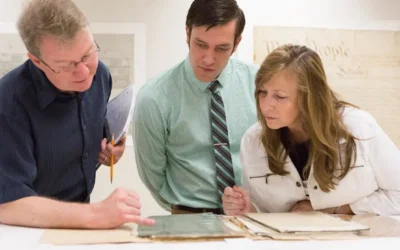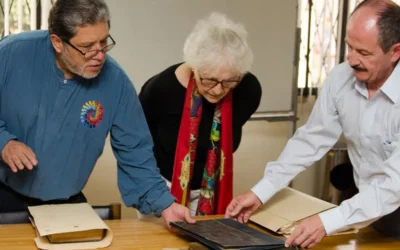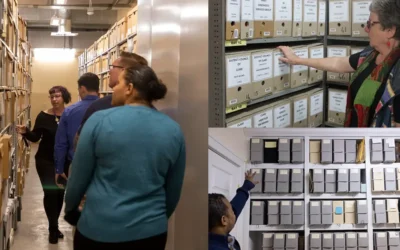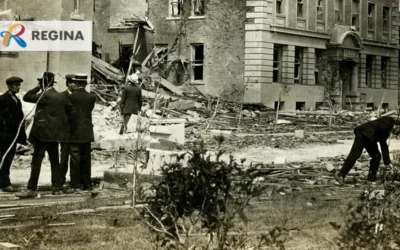In-house and Outsourced Archives Digitization
Margot Note
Digitization can be performed either in-house or outsourced. In-house implies that a department of the institution captures the images—supplying hardware and software, trained personnel, and overhead. Outsourcing requires entering into a contract with a vendor who will receive the images, convert them, and return the originals with the required digital files. Both in-house and outsourced alternatives should be considered when embarking on a digitization project.
Whether to digitize in-house or via outsourcing depends on the scope, nature, fragility, and uniqueness of the materials, the project budget, and institutional resources.
When Using a Vendor Is Best
Given the high cost of scanning and related equipment, outsourcing is advantageous, because vendors bring their experience of working on many similar projects. Few institutions have sufficient budgets to keep pace with the latest hardware and software. Vendors maintain the newest equipment, employ specialists, and are knowledgeable about their services and costs. They can offer lower rates per image because they have streamlined workflows that have been perfected over time.
In my consulting practice, I often advise organizations—especially if they are new to digitization—to use a vendor. Outsourcing allows the organizational staff to gain knowledge about digitization at their own pace, instead of making costly mistakes by doing it on their own.
D.I.Y. Digitization
However, outsourcing imaging rather than developing in-house digitization services is not always the best solution. Archivists may be motivated to invest in the space, staff, training, and equipment needed for digitization if they already administer or have access to a scanning studio within the broader organization. Additionally, the institution may decide to invest in developing expertise that can be leveraged for other services. While using vendors is convenient, the experience gained during the execution of the outsourced work will be lost to the cultural institution at the end of the project. Performing digitization in-house retains this specialized knowledge. In-house imaging also allows for small-scale experimentation without having to write technical specifications and contracts. A pilot project may serve as a prelude to vending out the bulk of the work and is often a necessary step in the learning process.
When In-House Digitization Is Best
Working in-house is suitable when a project is small or can be broken down into segments, if the institution has skilled staff or staff with an incentive to learn, support from the administration for in-depth training, and already has appropriate equipment or funding to acquire it. By developing digital imaging expertise internally, even if the approach results in higher per-item costs for digital surrogates, the organization positions itself to digitize collections into the future.
Setting Up Your Workstation
To work in-house, an appropriate environment and hardware and software system must be in place before digitization can begin. Elements include scanners, digital cameras, copy stands, and other hardware; a computing infrastructure; and software for image capture, processing, metadata, and quality control. The working environment should be appropriate to the material being digitized, paying attention to light, humidity, vibration, and the movement of the originals.
Scanning Onsite
Candidate images will have to be moved to the location of the digitization equipment, either to another building or city. Although outsourcing usually entails sending images to vendors outside the institution, some vendors may be able to scan on site. The vendor working in your archives offers some of the benefits of in-house projects, such as closer oversight of the vendor, but providing an appropriate work area, as well as security, insurance, and other details will still be required.
A Hybrid Approach
I’ve chosen both in-house and outsourced digitization, depending on the size of the project, the turnaround time, and the quality needed for the resulting images. For the scanning of single items or small collections, I’ve digitized archival items with a scanner, then used Adobe Photoshop for post-production. For a massive project scanning thousands of slides, I used a vendor that offered drum-scanning so that I would receive high-quality, high-resolution images I would not be able to replicate with my own equipment. Allowing yourself to be flexible with your options guarantees results that will work for your institution.
Margot Note
Similar Posts
Enhancing Collaboration; Methods for Archivists
Archivists can enhance collaboration through user-centric approaches and efficient processing methods based on customer service principles.
Navigating Selection in Archival Practice
The archival selection process is far from straightforward, given the limitations of long-term preservation and ongoing accessibility challenges.
Responsible Stewardship in Archival Practice
Responsible stewardship is a philosophy that guides the actions and decisions of archivists in safeguarding collective memory.
A Modern View of a City’s History via ArchivEra
Brief success story on City of Regina Archives’ use of ArchivEra to manage collections of legal, historical, administrative or financial significance
Hosting service
Enjoy all of the benefits of your Lucidea solution with secure, reliable, stress free hosting
Programs & incentives
No matter your size or budget, we’ve got you covered, today and tomorrow



